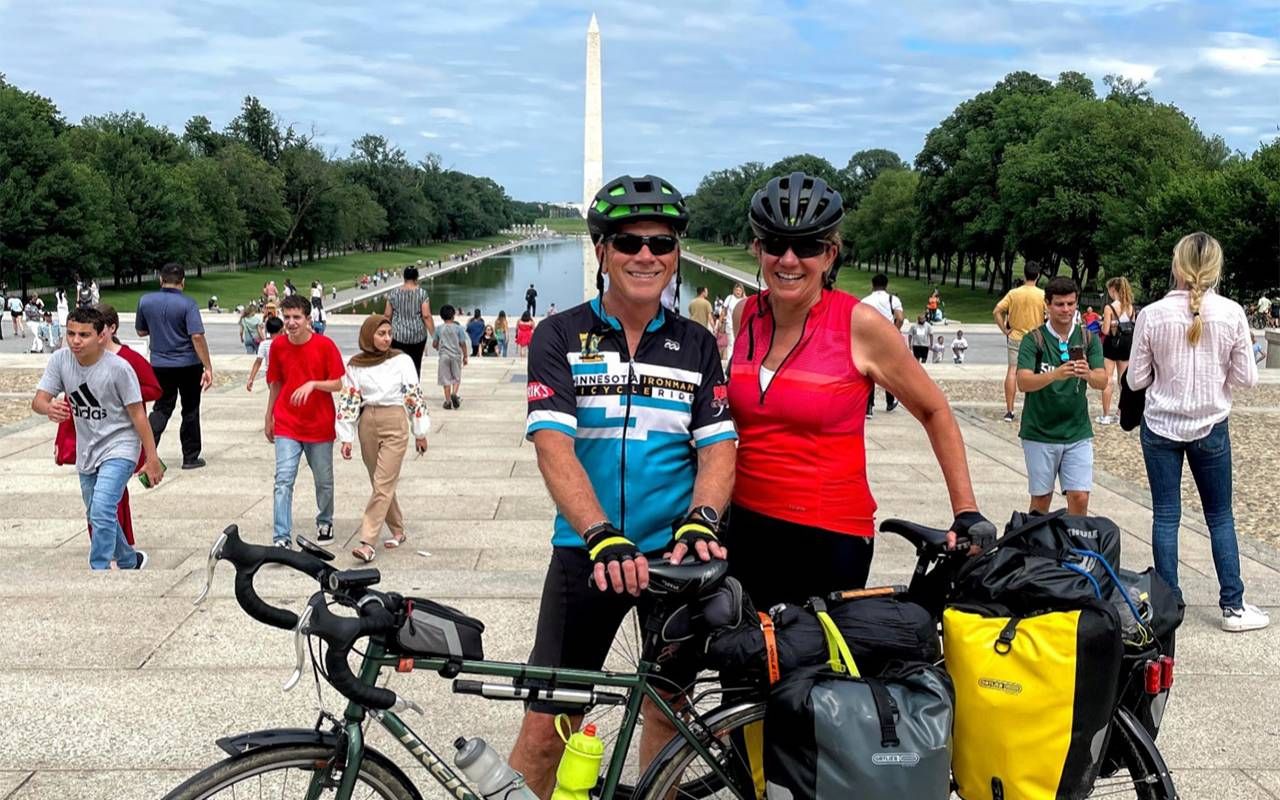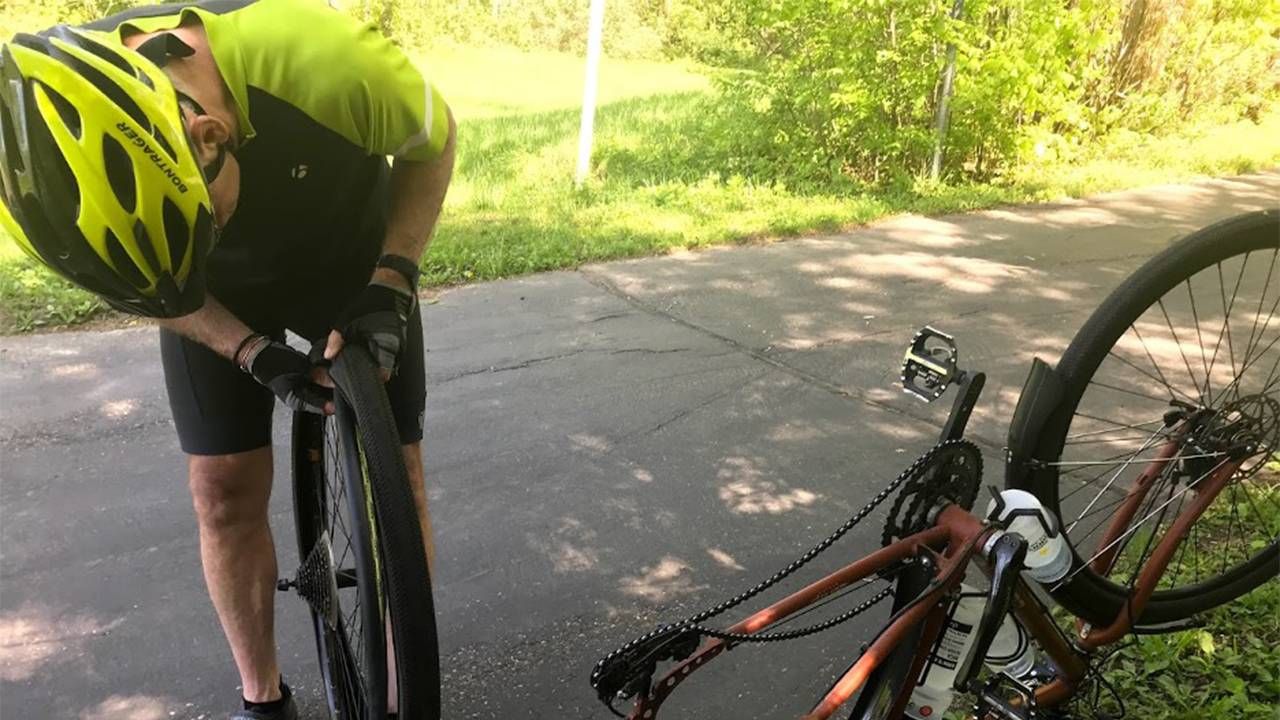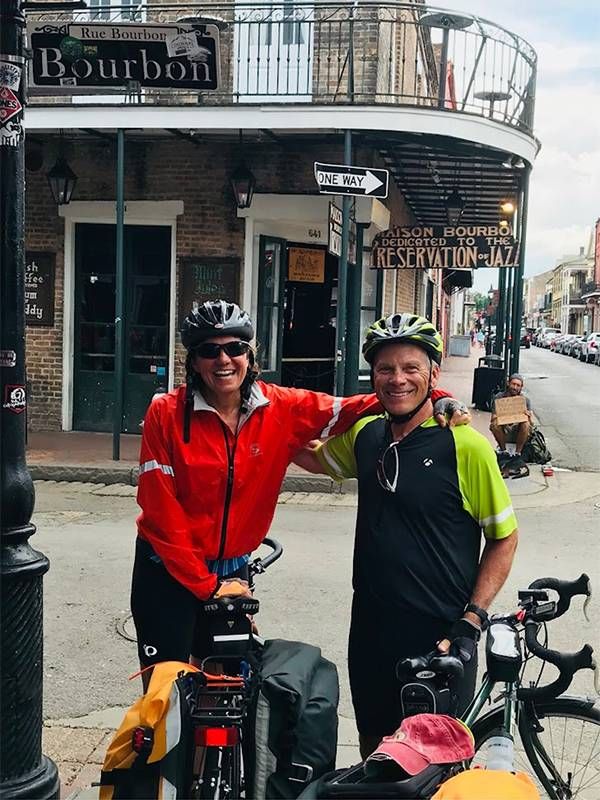Taking a Road Trip By Bicycle
Your only constraints on how far you can go will be your own strength and the amount of daylight you have
It is by riding a bicycle that you learn the contours of a country best, since you have to sweat up the hills and coast down them. Thus you remember them as they actually are, while in a motor car only a high hill impresses you, and you have no such accurate remembrance of country you have driven through as you gain by riding a bicycle.
Ernest Hemingway, "By-Line: Selected Articles and Dispatches of Four Decades"
I remember the Sunday morning, lying in bed as we were sleepily talking about possible vacation plans, when one of us said "we should ride our bikes to New Orleans." Our home in St. Paul, Minnesota, is only a block and a half from the Mississippi River and we walk, run or ride along and across the river every day, and I look down on the water flowing south and think about all there is to see along its course to the Gulf of Mexico and that it is one of the great rivers of the world.

That casual remark, from the comfort of our bed, led us to embark on a series of long distance trips via bicycle, including the 1500 mile journey from our home in St. Paul to Bourbon Street in New Orleans in 2018.
Your only goal is to get to your destination safely and the next day, go on to somewhere else.
Bike touring is simply going on a road trip, except on your bike rather than in your car. It is all about traveling somewhere, carrying your clothes and perhaps your camping equipment on the bike, typically in pannier bags that mount on racks over your rear (and sometimes) front wheel. Touring by bike allows you to experience the world and its sights, sounds, smells and its contours up close – climbing and descending hills and making it to your destination safely.
We've all seen bikers out on fast rides on their very lightweight bikes, obsessing over frame weight, cadence, power and speed. Touring by bicycle is completely different. It is the difference between running in a race and going for a hike with a backpack. The touring bike is heavier, and it is designed to be loaded with gear, making it heavier still. Your speed is up to you and the landscape and the wind and all the elements you will be exposed to. Your only constraints on how far you can go will be your own strength and the amount of daylight you have. Your only goal is to get to your destination safely and the next day, go on to somewhere else.
One of our first thoughts about traveling by bike was "it will be cheaper than traveling by car" which it is, once you have acquired the proper gear…which we did not have. We needed new bikes, a lightweight tent and cooking equipment. We also lacked the experience to tackle such an adventure, and it took us years to acquire both gear and expertise, as we experimented with shorter overnight trips and read a lot of books and blogs about bike travel. Since 2018, we have traveled over 12,000 miles on the same bikes with the same tent as we did on that first trip.
In our travels from St. Paul to New Orleans, to Washington, DC, to Chicago and across New York State, we've met many other individuals and couples doing the same thing, and have been impressed that they tend to be a bit older — an observation that was confirmed in a 2017 survey of people who travel by bike done by the Adventure Cycling Association which found that 78% of respondents were over 51 years of age.
Certainly, this activity requires a relatively high level of fitness and coordination, but it is also not as demanding as it might seem. The part of your body that needs to be trained the most is the part that rests on the bike saddle — for many hours a day.
Supported vs. Unsupported
There are lots of opportunities to travel by bike with a group accompanied by a mechanic, a guide and a sag wagon with all the gear (and water and snacks). That is a good way to get the experience of long distance biking without the stress of carrying your own gear, fixing your own flats, with no worries about navigation, water and food supplies along the way.

Lisa and I have not done that kind of touring - we ride "unsupported" meaning we have nobody following us in a car, we carry everything we need, navigate on our own and repair our bikes if they need it. Unsupported bike touring is quite a different experience, and one that can be both stressful and incredibly rewarding.
We are members of the Adventure Cycling Association (Missoula, Montana) which publishes detailed maps of routes that they have researched all across the country and which have been ridden by thousands of bikers, and then continually revised and updated. In the months prior to a long trip, we study the maps carefully and decide how long we can ride each day, and then lay the route out on a spreadsheet, so that we know where we will end up every day, and whether we will sleep in a tent or a hotel.
As we've aged (Dan, now 72, Lisa, 60) we spend fewer nights camping and more in the hotels or motels we find at the end of the day.
The Importance of Good Gear
I am not an expert bike mechanic by any means, but I've learned enough to repair tires and other minor issues while on the road. The ACA maps also include the bike shops that can be found along the route, and we've stopped at many to resupply, replace chains, adjust shifters and brakes and get advice.

At the very minimum, you should be able to properly repair a flat tire as it is almost inevitable that you will have one or more on a multi-day or multi-week trip. Extra tubes, a few (small) tools and a tire pump are necessary, as well. Good bike clothing (padded shorts, bike jerseys and biking shoes) will make traveling by bike much more comfortable
A good way to see if bike touring is for you is to plan an overnight trip from your house to a park or an inn in a nearby town. How far can you ride? Lisa figured out on our first long trip that one way to think about it is that the distance you can drive in one hour will likely take you about a day to ride on your bike.
We typically average about 10 miles per hour, so a one-hour trip in a car at 70 mph would equal 7 hours in the saddle (with a couple of stops for lunch and other breaks) and covering 70 miles. That sounds like a long time on a bike, but 10 mph is an easy pace, and, in the summer, there is a lot of daylight. Get started early and you will arrive at your destination in time for happy hour! (Of course, you need to train up to those distances by going on increasingly longer rides prior to your adventure.)
The People Along the Way

I wrote on our blog once that "everyday is a series of unknowns and problems to solve." This is not necessarily a bad thing: solving problems is good for our brains. We once met a man (our age) who was a seasoned bike traveler and during our conversation on the trail, he said "sometimes I just want to get down in the ditch and cry …" That should be expected. But the feeling of accomplishment and prevailing over hardships is deeply rewarding. As many wise people have noted – life begins at the end of your comfort zone.
On every trip, we've met many friendly and kind strangers who have offered us water, encouragement, prayers, and more than once, a lift over steep hills. These encounters have convinced us that even in our polarized political and cultural environment, meeting people one on one (especially when one of you needs a little support) is the best way to recognize each other's basic humanity.
I hope we'll be travelling by bike for years to come — we are currently doing research on bike routes in Europe.
If you are interested in reading more about our travels, all our adventures have been documented at our blog Confluence.


